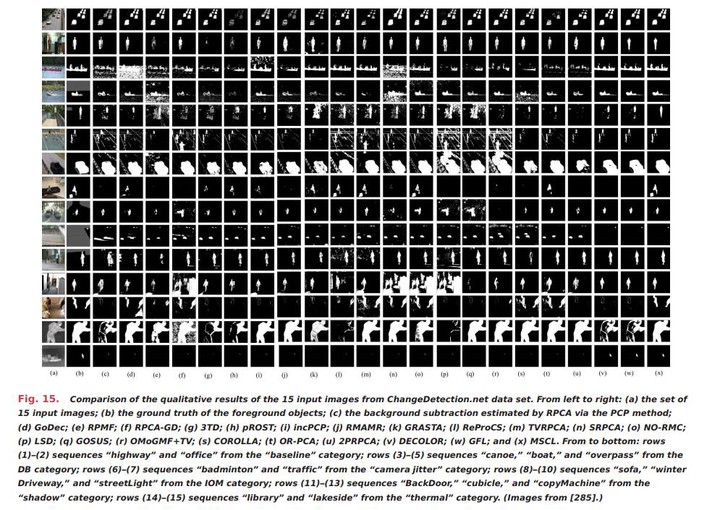On the Applications of Robust PCA in Image and Video Processing

Abstract
Robust principal component analysis (RPCA) via decomposition into low-rank plus sparse matrices offers a powerful framework for a large variety of applications such as image processing, video processing, and 3-D computer vision. Indeed, most of the time these applications require to detect sparse outliers from the observed imagery data that can be approximated by a low-rank matrix. Moreover, most of the time experiments show that RPCA with additional spatial and/or temporal constraints often outperforms the stateof-the-art algorithms in these applications. Thus, the aim of this paper is to survey the applications of RPCA in computer vision. In the first part of this paper, we review representative image processing applications as follows: 1) low-level imaging such as image recovery and denoising, image composition, image colorization, image alignment and rectification, multi-focus image, and face recognition; 2) medical imaging such as dynamic magnetic resonance imaging (MRI) for acceleration of data acquisition, background suppression, and learning of interframe motion fields; and 3) imaging for 3-D computer vision with additional depth information such as in structure from motion (SfM) and 3-D motion recovery. In the second part, we present the applications of RPCA in video processing which utilize additional spatial and temporal information compared to image processing. Specifically, we investigate video denoising and restoration, hyperspectral video, and background/foreground separation. Finally, we provide perspectives on possible future research directions and algorithmic frameworks that are suitable for these applications